12 Houseplants That Can Boost Your Overall Health

"Hearst Magazines and Yahoo may earn commission or revenue on some items through these links."
When it comes to sprucing up your home, adding color, texture and liveliness to your space is essential. Houseplants do just that, reviving rooms with life that changes before your eyes. Houseplants may not have the air purifying qualities we once thought, but their benefits to mind, body and space are irrefutable.
“I find the act of tending to plants meditative,” says Ashley Nussman-Berry, founder of the Black Planters Facebook group. “It provides a moment of mindfulness that helps me reconnect with myself while dealing with the chaos of daily life.”
The best indoor houseplants aren’t just aesthetically pleasing. In 2022, researchers in the Department of Landscape Architecture at National Chin-Yi University of Technology in Taiwan analyzed 42 studies about houseplants and reported the myriad ways in which plants can have a positive effect on mental health, including stress reduction and improved focus. Many varieties, including snake plants and rubber trees, are even known to be great feng shui plants, which can add positive energy to your space.
If you’re nervous about taking on the added responsibility of a houseplant, there are plenty of potted companions that don’t require too much work to keep them alive and thriving. To find the one that’s right for you, browse through our list of best indoor plants for health.
What are the healthiest houseplants?
Lisa Eldred Steinkopf, known as The Houseplant Guru for her blog dedicated to sharing knowledge about plants, says that the "healthiest" houseplants are the ones that are easiest to care for. “If you’re a new plant parent, it is important to choose plants that are tried and true and easy to grow,” she says. "Choosing a difficult plant could be stressful. Plants like pothos, philodendron, snake plants and ZZ plants are relatively easy plants to grow."
Philodendron Plant
Philodendron plants, known for being low-maintenance, can thrive indoors if given the proper amount of sunlight and water. Philodendrons prefer indirect light and can grow in average home temperatures, making them easy to care for. There are plenty of different kinds of philodendron plants to choose from, including birkin philodendrons, heartleaf philodendrons, imperial green philodendron and more. While each variation has a few differences when it comes to maintenance, they're all pretty hassle-free, making them the perfect houseplant for new plant parents.

ZZ Plant
ZZ plants live up to their nickname as the Eternity Plant. According to The Sill, these plants need around six hours of indirect light per day and require watering every two to three weeks.
If you decide to purchase a ZZ plant, make sure to keep it away from any pets or small children — their leaves can be toxic if consumed.

Elephant Ear Plants
If you want to spend a little more time with your houseplants, try elephant ear plants. “They look tropical with their huge and dramatic foliage,” says Tammy Sons, CEO/Founder of TN Nursery in Tennessee.
Elephant ear plants are organized into a group of tropical, perennial plants instantly recognizable by their big, heart-shaped leaves. “They require warm temps and a lot of irrigation,” Sons advises. “They can get big and may need extra space. Most love full shade, but some need partial sun.”
One thing to watch out for: the leaves of this plant contain harmful elements that, when ingested, can cause symptoms such as blisters in the mouth, nausea and vomiting, and severe swelling of the tongue, mouth and eyes.
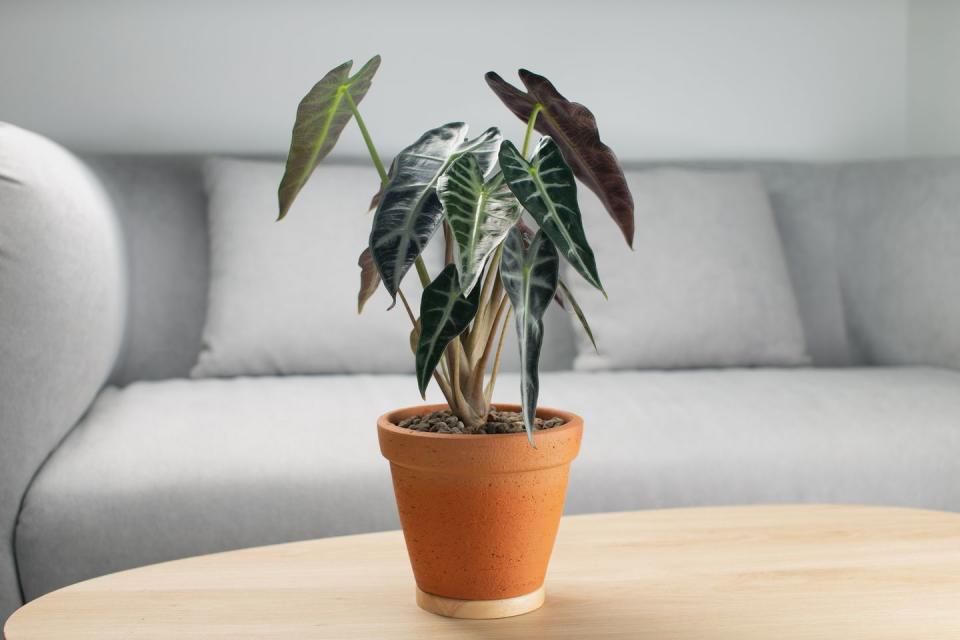
Spider Plant
Spider plants, or Chlorophytum comosum, are "one of the easiest to grow—[it] thrives on neglect,” says Sons, who explains that spider plants do well in various conditions and can tolerate low light.
If just reading the word "spider" in the name is giving you the creeps, don't worry. These plants have narrow leaves and get their name from the “small plantlets produced on long trailing stems that vaguely resemble spiders,” reports the University of Wisconsin-Madison Division of Extension. Think of the plantlets—or as Sons calls them, “pups”—as a bonus, as they can be “propagated effortlessly” (removed and planted individually) so you can have even more spider plants!
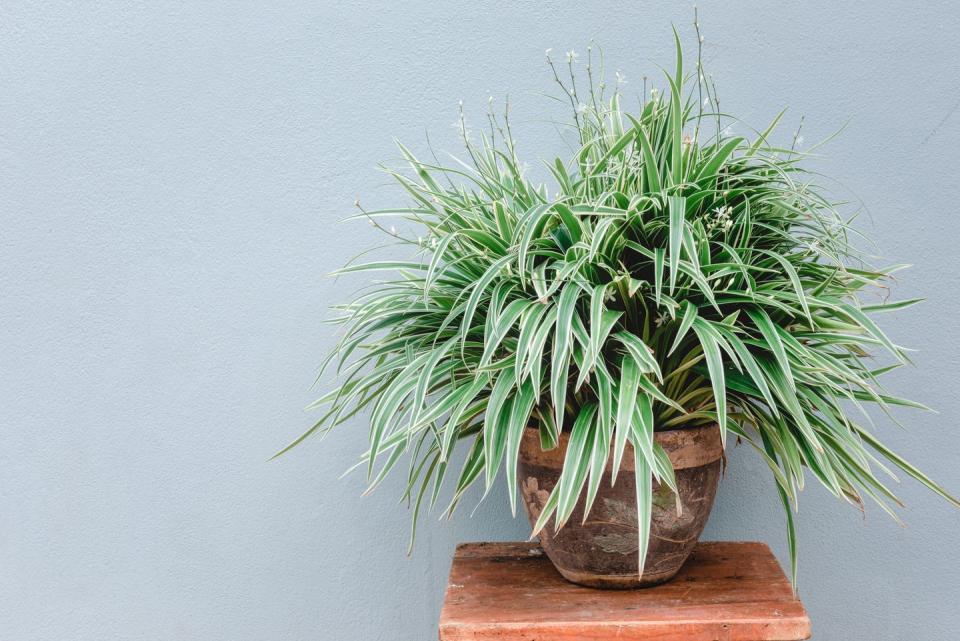
Snake Plants
Also known as “mother-in-law’s tongues,” the snake plant, or Sansevieria trifasciata, is known for having tall leaves that grow vertically. But there are many varieties of snake plants. Some have striking yellow accents; other types are long and curvy; and still others are cute and spiky. However, all snake plants have one thing in common: they’re extremely low-maintenance. The plants should only be watered when the soil is dry, grow in any kind of light and generally “thrive on neglect,” according to experts at HGTV.
Despite being low-maintenance, they look great on any kitchen windowsill—although you’ll want to keep them out of reach of pets, as they’re considered toxic to cats and dogs.
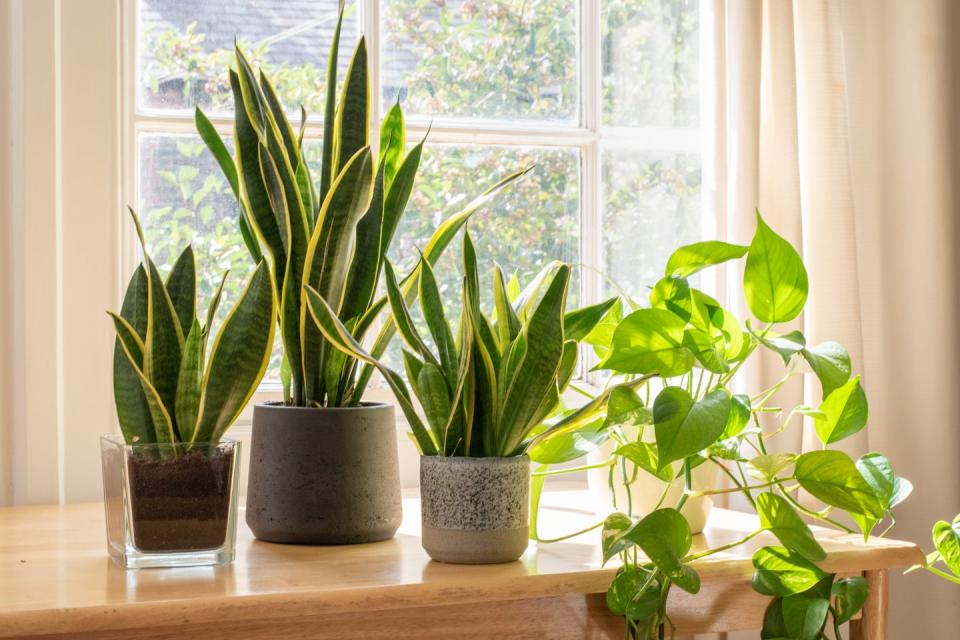
Succulents and Cacti
Succulents and cacti are great “for those who forget to water plants or want low maintenance greenery,” says Sons. They are also downright adorable and come in many shapes and sizes to decorate your space.
Succulents come in many shapes and sizes, and aloe vera plants in particular have medicinal properties and can help heal cuts, burns, and other skin ailments. Since succulents are drought-resistant, they really are the epitome of a stress-free plant that still adds that touch of nature you may crave, especially in urban areas.
"They make us feel closer to nature, when nature may not be right outside our door. Living in an apartment or working in a high rise makes it harder to get out and enjoy nature. Greenery in our homes brings nature in," says Steinkopf.
One thing to remember about these cute little plants? "Use well-draining soil and water sparingly,” warns Sons. “Overwatering is the biggest killer of succulents and cacti.”
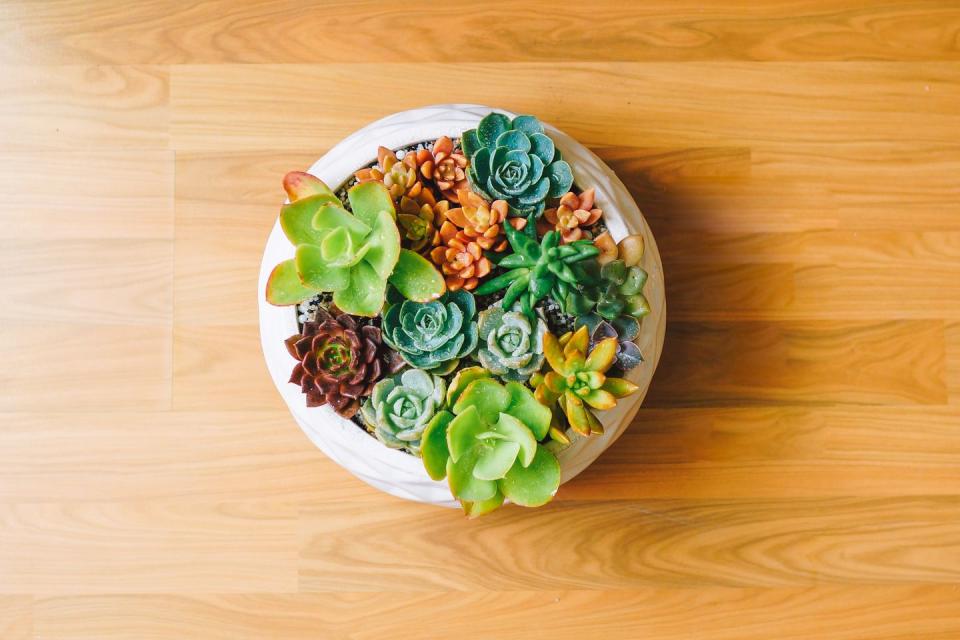
Peace Lily
The name “peace lily” definitely evokes a sense of calm, and Sons describes this plant as “very easy and low-maintenance; hearty, but sensitive to drought and excessive heat.”
Since Peace Lillies prefer indirect, low-to-medium light, they’re ideal for shady spaces. They’ll also give you the heads-up when they need attention: “It tells you when it needs water by wilting slightly,” says Sons. Peace lilies can live for years and continuously produce broad white flowers that resemble a white peace flag. They’re easy to take care of and don’t need much light, so they’re ideal for shady spaces. Just keep them out of reach from pets and small children, as they can cause vomiting or tongue swelling if they’re ingested.
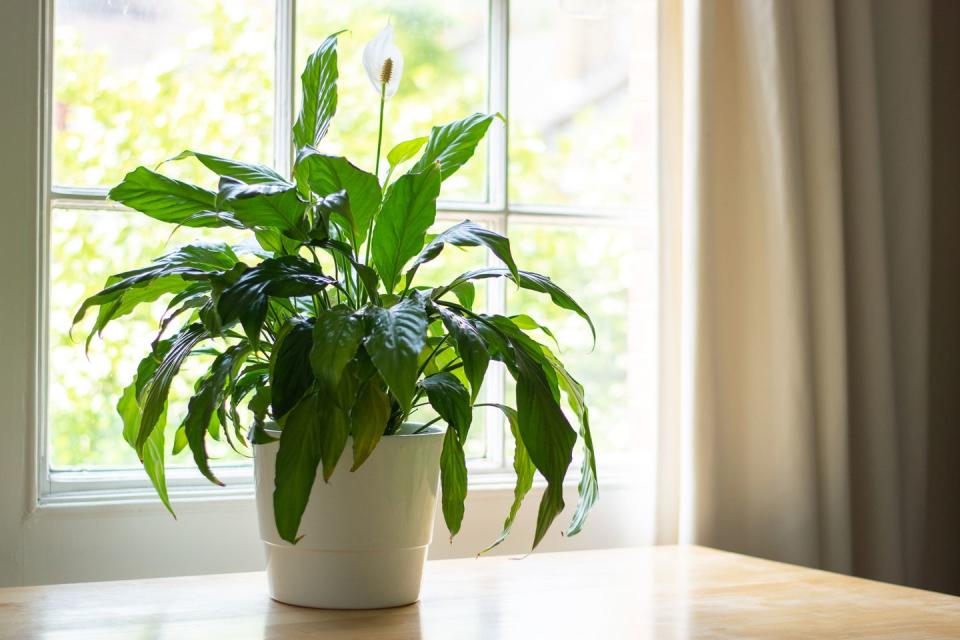
Rubber Plants
Rubber plants — also known as rubber trees or Ficus elastica — make for great indoor houseplants. They’re generally easy to take care of and only need to be watered every week or so, according to The Sill. This is another plant that must be kept away from any pets and young children, as they're known to be highly toxic when ingested.
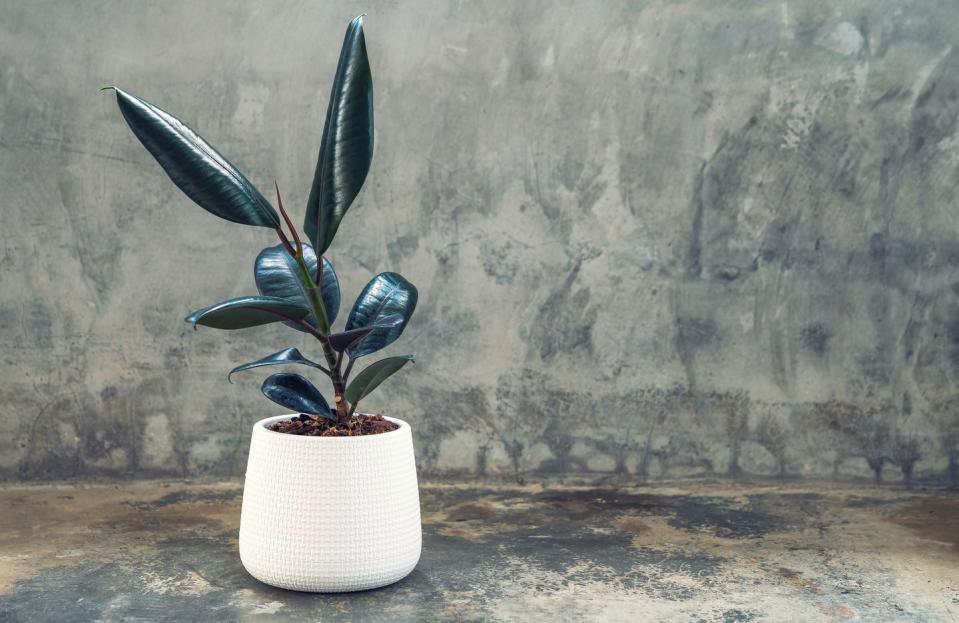
Ferns
Ferns grow easily and look the best indoors in hanging baskets or on plant stands, which allow their fronds to drape. They need medium bright light and consistently moist soil, so they might require a bit more of your time.
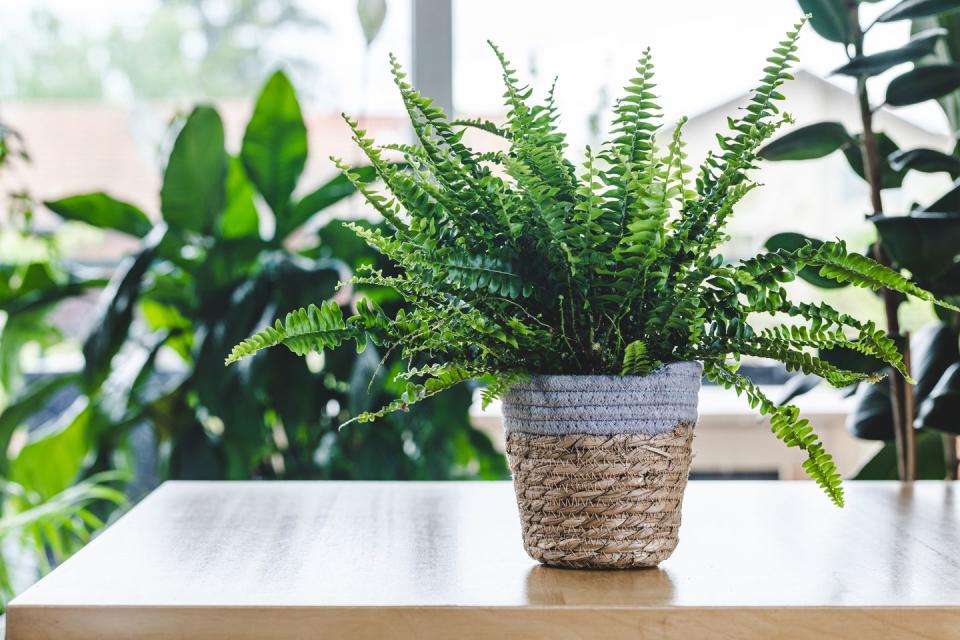
Pothos
When you picture a houseplant, the pothos, or Epipremnum pinnatum, is likely what comes to mind. Also known as devil’s ivy or golden pothos, the plants feature vibrant heart-shaped leaves that may be green or marbled green and yellow. They’re easy to grow, needing only indirect sunlight and infrequent watering.
Plus, these plants are also aesthetically-pleasing, which can give you a sense of comfort at home. Nussman-Berry appreciates the "lush greenery" of pothos plants, adding that they "can instantly uplift my mood and bring a touch of nature indoors."
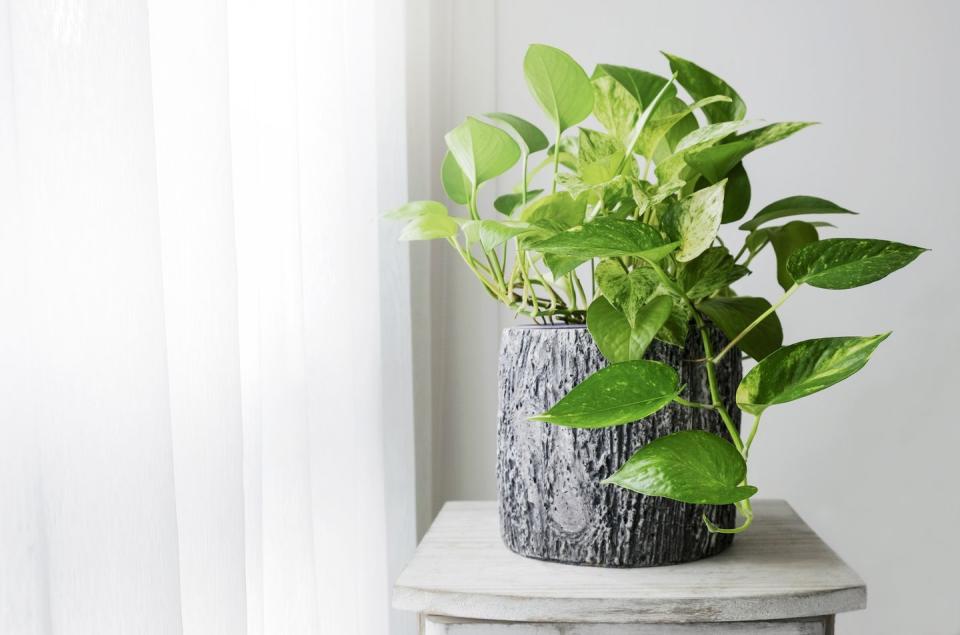
English Ivy
English ivy, or Hedera helix, is a versatile plant that can be grown outside or indoors. As a houseplant, the ivy grows well in hanging baskets or pots, and can be trained to grow along a trellis or shape, according to the Clemson University Cooperative Extension. They grow best in direct sunlight and need to be watered thoroughly once the soil dries out.
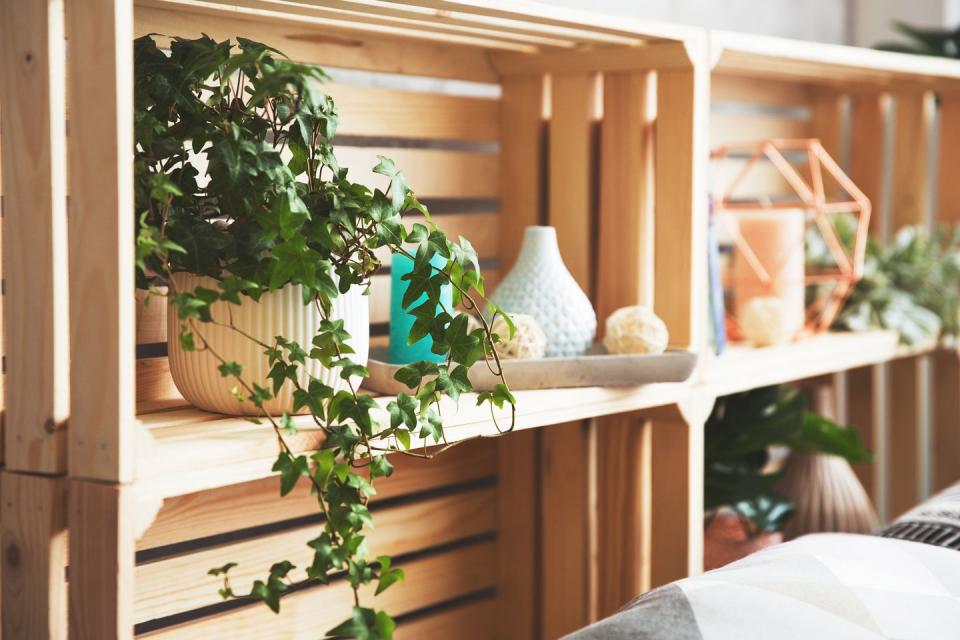
Herbs
Small potted herbs not only look cute in your kitchen, but they may also inspire you to cook more often and eat healthier. Growing your own basil, parsley or mint is also cheaper than purchasing herbs from the grocery store. Several herbs, like chamomile and lavender, have been shown to reduce anxiety, per Mayo Clinic officials. Herbs also contain vitamins, minerals and antioxidants, which are a boon for your dietary routine.
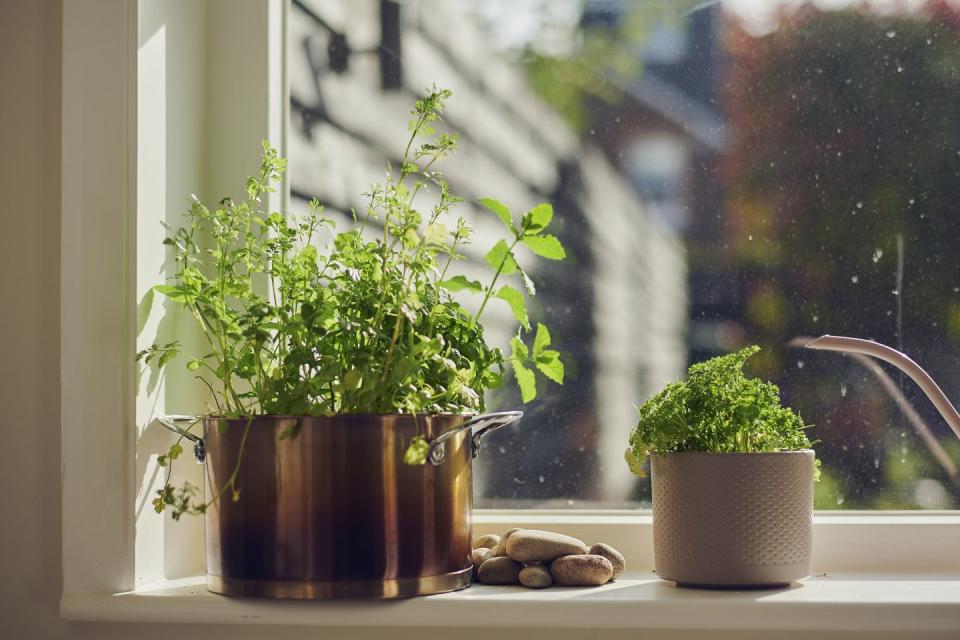
How do house plants contribute to better health?
Studies show that having—and caring for—houseplants can promote wellness, but they’re also a wonderful way to elevate your office or living space. “If your indoor space is lacking in appeal, adding a plant or two, or three, can increase the aesthetic style of the home,” says Sons, adding that plants can increase the humidity if the air feels dry.
Plants can also offer a "whole-person positive impact," says Amy Rothenberg, N.D., a naturopathic doctor and president of the Massachusetts Society of Naturopathic Doctors. “When we talk about treating the whole person, we mean looking after the body, the emotions and the spirit; plants can touch each of those essential areas,” Rothenberg explains.
However, it’s important to note that having houseplants alone isn’t a recommended treatment for any medical condition, Rothenberg adds. “Encouraging my patients to consider having houseplants is one part of a broader, individualized health care plan.”

What are the mental health benefits of caring for a houseplant?
Being around greenery offers many mental health benefits. In their analysis of 42 different studies, National Chin-Yi University of Technology’s researchers found that “when indoor plants were present, participants exhibited higher academic achievement and better performance in various cognitive tasks. In health-related functions, with exposure to indoor plants, participants less frequently took sick leave consumed fewer pain killers and had fewer hospitalization days than participants in environments where indoor plants were absent.” The researchers also noted that having houseplants can lead to lowered blood pressure, and even that the presence of indoor plants increased pain tolerance when participants placed their hands in cold water.
One benefit of having houseplants is simply the connection to nature. Nussman-Berry, the founder of the Black Planters Facebook group, puts it simply: ”[Plants] bring me a sense of purpose and routine as I care for them, which is especially comforting during stressful times.”

You Might Also Like


